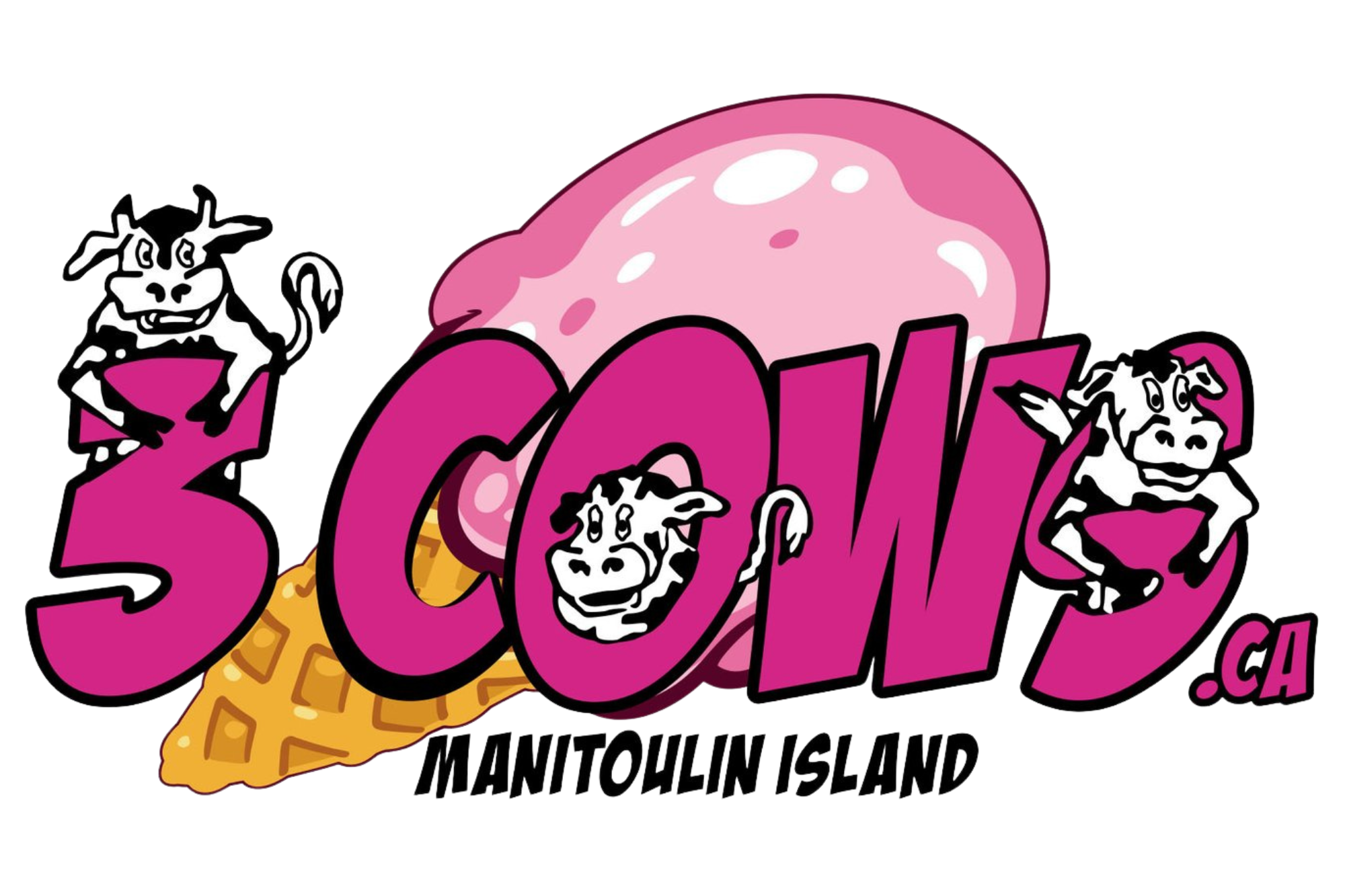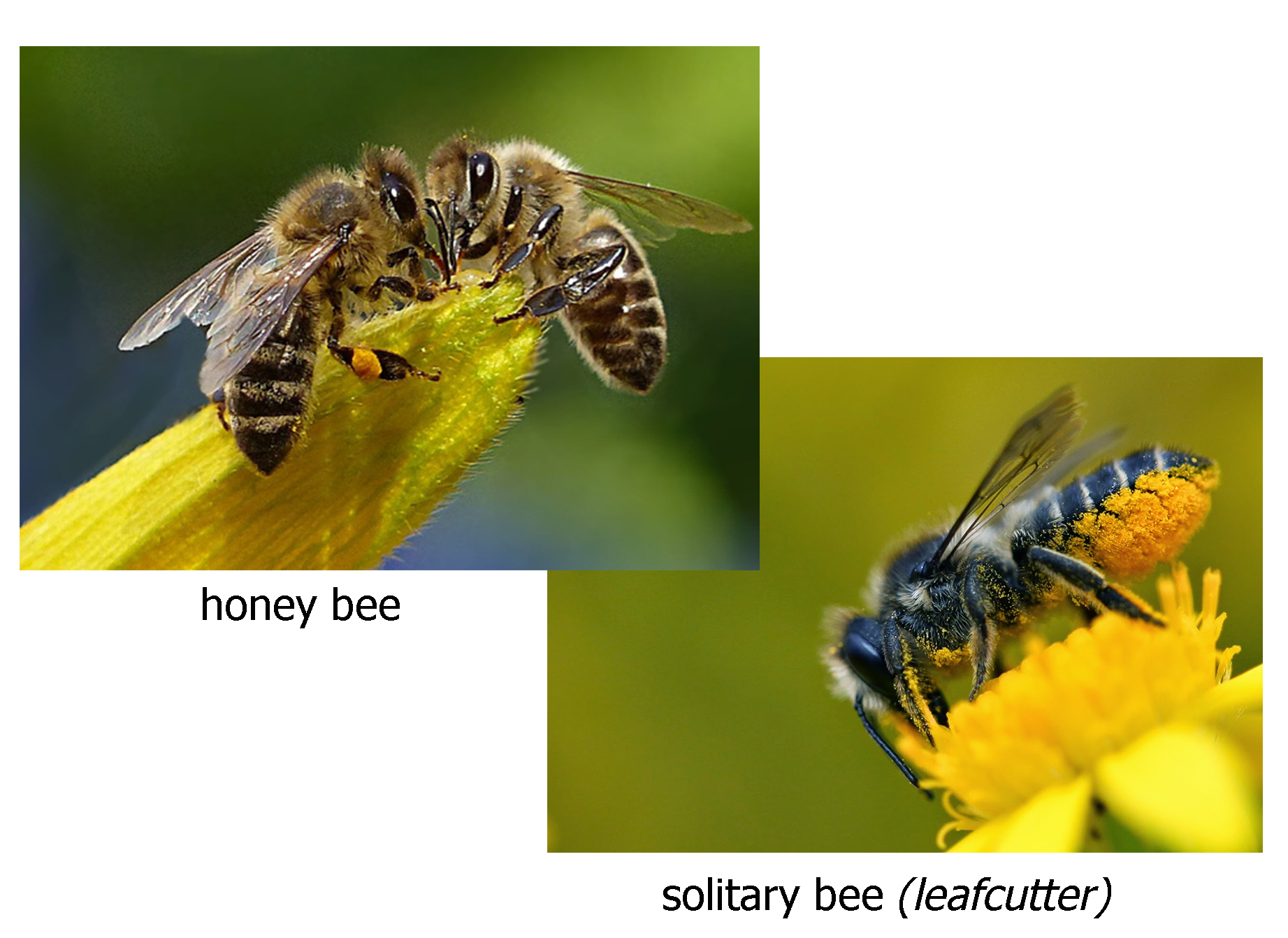What do Bees have to do with Ice Cream?
Thumbnail image: “Wings” by Kevin Hoffman
Bees are the world’s biggest pollinators. After all, they spend most of their lives zipping from flower to flower, collecting pollen.
There are actually many different types of bees - over 20,000 species worldwide (and more than 400 just in Ontario), to give you an idea of how vast their presence is. Social bees, such as honey and bumble bees, are driven by the need to sustain their colony - where many generations of bees are born each year. A queen rules their hive, and they work tirelessly to produce honey and beeswax. These bees will sting if they feel they’re in danger.
The solitary bee, like leafcutter or carpenter bees, are very common (there are over 200 species). They are excellent pollinators. The female bee carries a pollen and nectar mixture to leave for her larvae. She lays her eggs on top of this mixture to help it flourish into adulthood. However, they don’t require fancy hives - many nest in the ground, or find home in old wood. It’s relatively easy to house these bees in your own garden or backyard, and it’s greatly beneficial, as they usually forage within the same area they live. They are also rarely aggressive.
How do bees pollinate?
When bees collect pollen from the male parts of a flower, called the anther, some of the pollen particles cling to their hairs - as bees buzz through the air, they become statically charged, making it easy for the pollen to stick to their body. When the bee flies to the next flower, the pollen transfers to the stigma, the female reproductive organ of the flower. The flower needs to be pollinated to release seeds and grow fruit.
Of course, the bees get a reward of pollen and nectar in return - honey and bumble bees carry the pollen in sacs on their legs, called corbiculae, while most wild bees have sticky hairs called scopa on their legs used to transport the pollen.
Diagram of a flower (Photo: Wordpress)
A honey bee’s corbiculae, the visible orange sac (Photo: Fine Art America)
What do bees have to do with ice cream?
We know that bees help pollinate plants and flowers - in fact, it is said that at least one third of the food we eat is due to bees’ pollination. Many ingredients that go into ice cream flavours are reliant on pollination, including fruits (like strawberries, mangos, cherries) and nuts (such as almonds and coconut). Beekeepers will actually manage the hives, bringing them to fields and crops that need to be pollinated.
Many current ice cream flavours depend on these crops. If the crops are at risk due to declining bee populations, that means ice cream companies might have to change or eliminate certain flavours. This is not good news for die-hard ice cream fans - especially if you have your heart set on a certain flavour.
Bee on an almond tree (Photo: Mother Jones)
Obviously, dairy ice cream cannot exist without cows. Bees pollinate the flowering plants that cattle forage.
Dairy cows (Photo: Free Range Dairy Farmers)
How are bees at risk?
There is a phenomenon called Colony Collapse Disorder, where a majority of worker bees will desert their colony, leaving behind the queen bee, young bees, and meagre adults to care for them. Beekeepers began reporting significant losses to their hives as early as 2006, and this launched multiple studies that delved into these mysterious occurrences.
They found that while there are multiple factors that affect bee colonies, it is difficult to narrow the blame down to one leading cause. Threats such as pathogens (microorganisms that cause disease), climate change, habitat loss, and pesticides all contribute to the loss of bees. Many claim CCD has subsided, with the number of bee-hives on the rise. Pesticides still remain a harmful issue to bees, and as of 2019 Canada has announced their plan to halt the usage of certain pesticides on crops.
Bee loss estimates in the U.S (Photo: Planet Bee)
What can you do to help?
There are many ways you can help save the bees. One of the most important ways is to stop using pesticides, and spread the word to encourage others to halt their usage as well. They are highly toxic to bees, as they are sprayed onto plants that bees then unknowingly land on.
Another great way to help the bees is to plant your own bee garden. Initiatives like Save the Bees Manitoulin encourage people to plant flowers that attract bees, such as lavender, daisies, and cosmos. Bees are even attracted to dandelions, if you don’t feel like de-weeding your lawn!
Everyone can have a part in helping the bee populations survive. It’s important to be informed; bees have a larger role in the world than most people realize. Next time you’re enjoying an ice cream cone, take a moment to thank the bees for their hard work pollinating!






